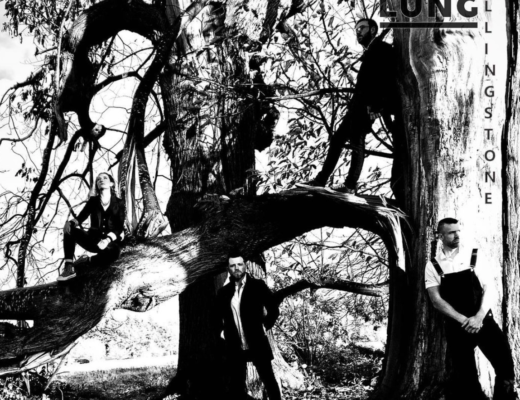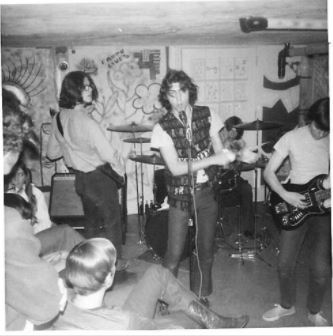ShadowHart’s debut LP Get In, I’m Driving tips its hat to early 2000s pop punk and drags it through a contemporary lens with orchestral flourishes, polyrhythmic guts, and a lyrical backbone that pushes past adolescent angst and into something more redemptive. In this exclusive interview with A&R Factory, the solo creative force behind ShadowHart opens up about the intricacies of building a sound that’s as technically bold as it is emotionally grounded. From composing music that tells a story before a single lyric is laid down to embracing the absurdity of mental clutter, ShadowHart isn’t playing it safe. If you’ve ever wondered what pop punk could sound like if it were rebuilt from the ground up with intention, invention, and a solid dose of self-awareness, this is one interview you won’t want to miss
Welcome to A&R Factory, ShadowHart! Your take on pop punk is hitting at just the right time, and Get In, I’m Driving sounds like it’s packed with the kind of energy and depth that’ll really connect with people. What drew you to the early 2000s pop punk sound, and what do you think today’s audience needs from it?
The first rock band I ever joined was an emo cover band. I hadn’t really experienced the genre before then – I grew up learning guitar via classic rock, and I was fascinated by metal music. But then I started listening and learning the tracks for the emo band and found influence from both of my favorite genres: melodic choruses and harmonies fused with high-energy distorted guitars. It was the perfect blend to stay musically interesting while reinvigorating the head bang. The audience that grew up on pop punk music wants to feel the nostalgia from when that music was popular, but ShadowHart sees a need for resolution from the angsty lyrics and depressive themes of the 2000s.
Get In, I’m Driving feels like an invitation. What kind of ride are you taking listeners on, and what’s the moment that really defines the record for you?
This record is exactly that – a ride full of excitement. ShadowHart takes you on a journey from a core sound and pushes the genre uniquely on each track, a hub-and-spoke approach to composition. If you listen carefully, you can hear influences from all corners of rock, punk, and metal music in this album. As ShadowHart’s debut record, Get In, I’m Driving invites listeners to experience the resurgence of their favorite anthems under a new, refreshing light. ShadowHart’s message is centered on finding triumph in the human aspects of life, like having friends who forgive you when you make mistakes, or recognizing your weaknesses and being able to laugh about them. There’s a track entitled “Looks Like We Made It” that acknowledges the struggles this generation grew up with and encourages listeners to look around and recognize everything they’ve accomplished. The album opens and closes with the same theme for a reason: there are plenty of songs about breaking up, but nobody sings about the good experiences we often forget to appreciate.
A lot of modern pop punk leans into nostalgia, but your lyrics seem rooted in what people are going through right now. Was there a particular moment or experience that shaped the themes on this album?
Sting said it best in an interview with Rick Beato, where he alluded to the “circular trap” of modern music, which enables songs and lyrics to continue endlessly into one another, but you never get a sense of release musically or lyrically. He was specifically referring to the observation that most songs no longer have a bridge, which is usually a key change that resolves the tension in the song. I found that discussion inspiring, and I realized that in today’s music, a song itself can be a resolution from the past 20 minutes… or 15 years… of angst. ShadowHart takes the sounds listeners love and provides hope in the wake of societal crises that we’re all facing every day.
You’ve got an orchestral score in one track and a polyrhythmic time signature in another—most people wouldn’t expect that in pop punk. How important is it for you to push the genre musically, not just lyrically?
The trait that sets ShadowHart apart from other genre enthusiasts is the complexity of the music. Each mix is robust and powerful, revealing secrets in its own special way, but they all maintain a central, core feeling. Nobody’s going to make the next “Dear Maria, Count Me In,” despite how hard many artists are trying. The challenge with making an impact today is giving the people something different musically while making them feel something they remember. Guitars, bass, and drums aren’t enough for a rock hit in 2025. I used influence from all ends of the musical spectrum – not just pop punk – to make these tracks, including references from bands like ERRA, Memphis May Fire, and even One Direction. Why? Because people LIKE it. Listeners think they know what they like until they hear something truly striking. Each track in Get In, I’m Driving pushes the boundary of modern music with the intent of achieving that movement in the listener’s soul – movement that they didn’t know they weren’t prepared to experience.
You’ve handled everything solo up to this point, but you’re looking to build a band and sign with a label. What’s been the biggest challenge in carrying this project on your own, and what are you looking for in the right collaborators?
The hardest part of doing everything yourself is quite honestly that it’s impossible, especially if you work full time. You can’t possibly record, mix, master, promote, and market yourself while simultaneously playing live, coordinating photography, designing merch, running advertisements, securing copyrights, and everything else that comes with the music industry. When you are working alone, every commitment is a trade-off. As an example, I quit performing live for nearly a year in order to complete this studio album, because I recognized it needed that level of dedication.
That said, ShadowHart is backed already by mentors, producers, media workers, and other musicians who have helped me on my journey. The next step is to take my digital presence to a live setting, which means I’ll need a band. I’m moving to Oklahoma City this summer in hopes to find like-minded and skilled musicians to collaborate with. ShadowHart’s biggest limitations are time and money. I’ve been grinding at this for over 3 years and made massive strategic moves, setting a foundation to build an empire, but I can only accomplish so much by myself. I’ll need a dedicated team including musicians, publicists, digital media coordinators, and investors who are all willing to go the distance both in and out of the studio to make ShadowHart a global reality.
Your single Trains, Planes, and Automobiles tackles intellectual distraction in a playful way, while Calcified deals with grief. How do you find the balance between making music that’s fun and still delivering something meaningful?
An old mentor of mine, Shelly Berg (phenomenal jazz pianist, by the way) once told me, “Every song has a story.” When I begin writing a new track, I first think of the story I want it to tell – the emotion I want the listener to feel – and I compose from there. The goal, and the challenge, is to tell the story musically before ever adding the lyrics. If you listen carefully in “Trains, Planes, and Automobiles” there’s a breakdown section where the rhythm guitars start chugging along like a steam train’s exhaust, then a second guitar comes in with a “train horn” (minor 7th chord) over the top, followed by an octave “dinging” from the piano, like the station departure bell. Similarly, “Calcified” is a 4-chord song, but the main vocal harmony note is actually a major 2nd interval, creating dissonance over a major chord that pulls on your heart, like forcing a fake smile. In both cases, I’ve painted the picture with the music before ever adding lyrics, so the process is fun and exciting for me from the beginning.
Regardless of the nature of the feeling, ShadowHart is designed to make you feel – a concept which is often left out of contemporary radio hits. “Trains, Planes, and Automobiles” may seem goofy at first, but beneath the surface is a very real and embarrassing mental struggle that many young adults deal with. If you dig deeper into “Calcified,” you’ll find we never actually lyrically discover what happened to the narrator, just the numbness and sorrow he feels. People who thoughtfully listen to Get In, I’m Driving will discover that every track has a very meaningful message behind the curtain.
You’ve got a clear vision for ShadowHart, but how do you see the project growing over time? Do you want to keep experimenting, or is there a core sound you’re looking to refine?
We’ve refined the sound pretty deliberately over the past few years, so at this point ShadowHart is looking outward. The ripped heart logo means something very real, and the next step is to find buy-in from others. I’m reaching out to similar artists with the intent to collaborate on some studio work – so if anyone is interested in featuring ShadowHart on your next track, please feel free to reach out!
Once the album drops in April, what’s next? Are live shows on the horizon, and how do you want people to experience these songs beyond the studio versions?
Every ShadowHart song online was designed to be played for a live audience, “The ShadowHart Experience,” if you will. The mixes are massive, and the tracks encourage audience participation, bringing energy that multiplies in the presence of more people. If listeners commit to enjoying ShadowHart the way it’s intended, I promise anyone will have fun. I intend to bring ShadowHart to the stage now and set the conditions for fanbase investment. Step one is to build an awesome band.
Hear ShadowHart’s latest releases on Spotify and find out more about the artist via their official website.
Interview by Amelia Vandergast




No Comments